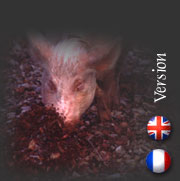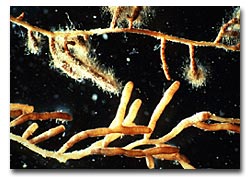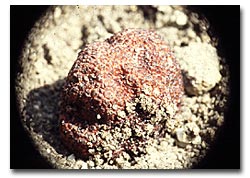
The origins of the truffleIt is common to say that the truffle is an underground mushroom, but more exactly it is the fruit of the mycelium. The classification of mushrooms, the truffle is in the category of the ascomycetes hypoges. Ascomycetes because the spores are enclosed in small pockets (asques) and hypogee because it is underground. In form, the truffle is generally round, but can also be very irregular in shape, depending upon the terrain. The biological cycle of the truffle is very particular; like all mushrooms the truffle does not carry out photosynthesis. It is therefore restricted to living a symbiotic life, connected to another life form. This partnership generally occurs with trees. It is thus thanks to the mycelium, its vegetative system that the truffle will look for a partner tree. From the meeting of the radicelle of the host tree and the mycelium, is born the indispensable product: the Mycorhize. Thanks to the mycorhize, the truffle can take the substances it needs from the tree, without which it would not survive. And this is what is called the mycorhizienne symbiosis. The mycorhisation either occurs naturally because of the presence of the truffle spores in the earth, or from planting oak trees, already mychorised. Once the tree is planted it takes ten years for the truffle spores to colonize and for the first truffle to appear. It is the mycelium, from the mycorhizes, which gives birth to little truffles. In fact in during the months of May and June, the mycelium retracts to form a pellet called the primordial. If they do not die, these little truffles will evolve and become independent from the mother tree in July. During the summer months, the truffle grows from several grams in size to its normal size of 30-50 grams. The color and the smell do not evolve until just before harvesting. But things are not so simple, and life cycle of a truffle requires the interdependence of three elements, which are the earth, the climate, and the host tree. |
Port 06 08 88 50 09 - Tél. 04 75 96 66 38 - Fax 04 90 30 34 09


